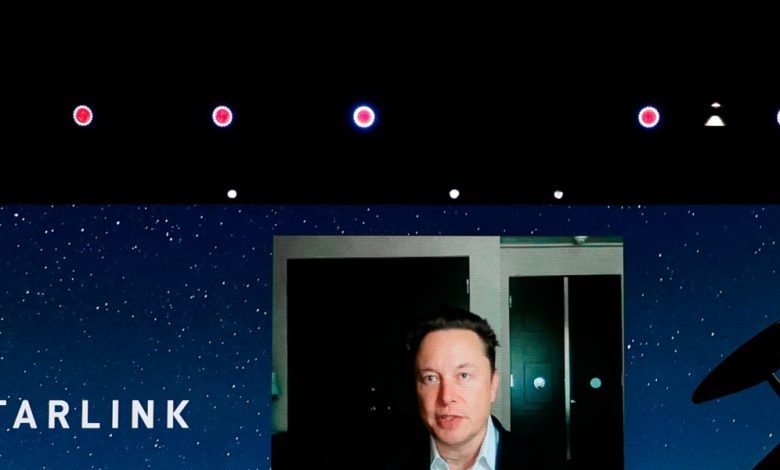The Starlink internet could be a game changer for Africa

It is difficult for many of us to imagine a world without instant, limitless Internet access. Some have even argued that it should be considered a basic human right alongside access to clean water and electricity.
But in fact, as of January 2023, only 64.4% of the world’s population are internet users. Most connected people live in Asia and Europe.
Africa comes third. However, accessibility varies widely across the continent. About 66% of people in southern Africa are internet users. In East Africa it is 26%; in Central Africa it is only 24%. People in rural areas have far less access than people in the continent’s urban areas.
Internet access opens up the world in many ways. It can entertain, educate, facilitate payments, and even strengthen democracy.
That’s why the advances in bringing internet access to people in Africa are worth celebrating. In January 2023, the US company SpaceX, which manufactures and launches spacecraft and communications satellites, announced that its Starlink service is available in Nigeria. This was a first for the continent. It is now also available in Rwanda.
Starlink is a satellite-based internet service. It is slated to roll out to other parts of the continent later this year, including the Democratic Republic of the Congo (DRC), Kenya and Tanzania. There will be more coverage in 2024.
This could be an important way to bridge Africa’s connectivity gaps caused by poor digital infrastructure and the high cost of investing in fiber optic cables or cell towers, especially in rural and remote areas. The United Nations has a strategy to achieve universal access across Africa by 2030, but this will not be possible without innovative approaches.
Starlink is one such innovation. Because all users share the same infrastructure in space, there are fewer cell towers to build or fiber optic cables to lay on land.
What is Starlink?
Starlink is a network of thousands of satellites located near Earth – about 550 km from the Earth’s surface – providing broadband Internet access.
Of course, satellites are already used for internet connection. But a traditional Internet satellite is a single geostationary object; its position in orbit is fixed with respect to Earth. These satellites are also more than 35,000km from Earth, so it takes a long time for the signal to reach the end user. As anyone who has tried to use the internet in a remote area knows, the farther a signal travels, the worse it gets, so traditional internet satellites tend to be slow and unreliable. They are unable to adequately support activities such as live streaming, online gaming, and video calling.
Starlink’s low-earth orbit satellites are capable of connecting and relaying signals, creating a fast and stable internet service. There are plenty of those too: On February 17, 2023, SpaceX announced that it had launched a total of 3,981 satellites, of which 3,639 are currently operational.
The company can launch its own satellites when needed and update them with the latest technology as needed, increasing their reliability.
Much of the internet access in Africa is currently provided via mobile, wireless internet – signals are relayed by land-based cell towers. This has less coverage and is slower than satellite Internet access.
One area of concern at Starlink is cost. For example, in early February 2023, FiberOne, a broadband internet provider in Nigeria, provided internet at speeds of up to 500Mbps, which is fast. The installation fee was N32,231 (about US$70) and the monthly subscription was about N100,000 (US$220). Starlink in Nigeria, meanwhile, costs about N276,000 ($599) once for the kit and installation, and then charges a monthly subscription fee of about N198,000 ($43).
Starlink is cheaper than fiber and mobile internet providers in the long term. But can the average rural Nigerian household with a monthly income of less than N28,000 (US$60) afford it? Given that median incomes are similarly low in most rural and remote parts of Africa, there is a risk that Starlink’s target users in the continent will not be able to use the service.
research uses
Putting these concerns aside, there is no doubt that a faster internet can move Africa forward. Despite the shortcomings of mobile wireless internet, he is credited with driving Africa’s technological advancement. Services like Starlink could fuel even greater growth in several areas. These include education, participation in democracy and governance, disaster risk reduction and mitigation, health and agriculture.
As a researcher in planetary and space sciences whose work includes the use of satellite data for monitoring and modeling related to geology, I am particularly interested in how these satellites could be used beyond internet access for tasks such as remote sensing and earth observation. I hope that Starlink’s arrival in Africa will help usher the continent into a new phase of technological development.
For example, satellite imagery can provide information about crop yields and help farmers make better decisions about irrigation, fertilization and harvesting. They also allow for widespread and effective monitoring of water levels in reservoirs, as well as greater transparency into how much water is available, providing early warning of shortages and consistent data between countries that share water sources.
Governments, researchers and industries can buy access to specialized Starlink satellites called Swarm for the data they need for these types of projects. The sheer number and speed of Starlink’s satellites means they can quickly gather lots of data and offer frequent updates. The arrival of Starlink in Africa is a great opportunity for the continent’s scientists, governments and industries to work together.
Learn how to navigate and build trust in your organization with The Trust Factor, a weekly newsletter exploring what leaders need to succeed. Login here.



